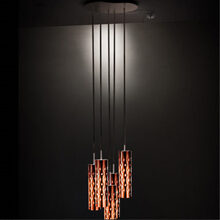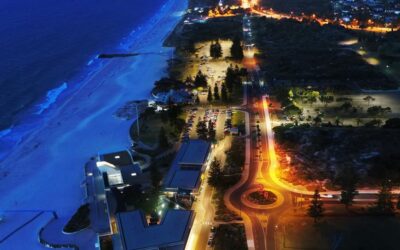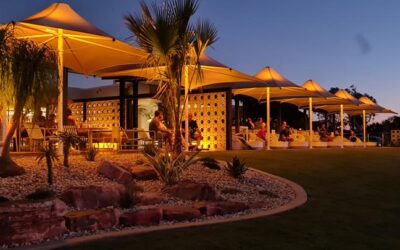Great food deserves an equally great dining ambiance, and one must consider the role lighting plays in setting this tone. Café lighting, restaurant lighting and even the lighting used to set the mood for home entertaining are critical to enhancing the comfort of guests and setting a relaxed mood.
Restaurant and café lighting are equally important as any other design features within the hospitality and entertainment arena. Varying levels of adjustable light should be included to delineate space and create a soothing environment for customers to want to return again and again for the enjoyment of the overall experience.
In a café or restaurant, the right lighting can:
- Create an atmosphere that contributes to the customer’s overall experience.
- Be a strong visual element of the overall design.
- Highlight certain features and draw attention to them.
- Delineate space.
- Be capable of changing the mood in different spaces or during different times of day.
The main types of lighting for cafes and restaurants
The lighting in a café or restaurant needs to perform a variety of tasks, so a mix of different lighting is required.
- Task lighting is needed in the kitchen for ease of cooking, plating and serving. Lighting in the dining space also needs to be sufficient for customers to read menus easily.
- Ambient lighting is required in the dining space for general illumination of the overall space and should be adjustable.
- Accent lighting can be used to draw attention to artworks and other design features and can be a design highlight in itself, for example, a row of large pendant lights over a bar.
Improving the lighting in a café or restaurant
If you are interested in upgrading or adding lighting to a new café or restaurant there are many factors to consider.
Start by determining the mood you wish to create, based on the food served and the overall tone and design of your establishment. Will it be quiet and romantic or buzzy and sociable? In a large space, different moods can be created with lighting in order to cater to several different customer bases. For example, the lighting can be dimmer in bars and lounge areas then in the central dining spaces.
Next, consider your establishment’s hours of operation. In the morning, your customers will appreciate lots of natural light or brighter lighting, with more moderate lighting at lunchtime when customers may be in a hurry. In the evening, lighting that promotes a relaxing atmosphere will encourage customers to relax and unwind.
With improved lighting technology it is now easy to customise different lighting settings with features such as automatic timers, dimming switches, sensors and controlled lighting units that can be activated with a click on your tablet or smart phone, which will save on energy costs.
Once you have determined the overall level of lighting required and the adjustments to make at different times of day, create focal points with accent lighting that will draw attention to an open kitchen, bar, menu board or artworks.
If your establishment has an outdoor area, pay just as much attention to the lighting in this area. Create a cheerful, playful atmosphere with dappled light at varying heights or focus illumination toward architectural features and plantings. Safety and security also play a part in lighting areas such as parking areas, pathways, entrances and exits. Spotlighting these areas can prevent accidents, while motion sensitive security lighting can thwart potential vandals or thieves.




